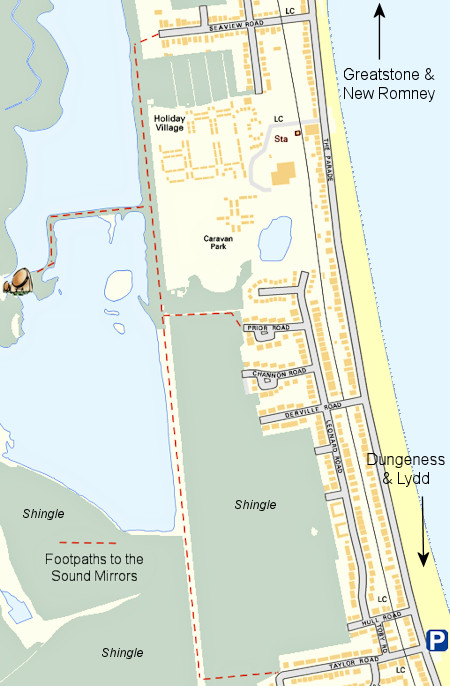Sound Mirrors
![]() Sound Mirrors - Special Events and Open Days
Sound Mirrors - Special Events and Open Days
![]() Video of the Sound MIrrors
Video of the Sound MIrrors
![]() 360° Panorama of the Sound Mirrors
360° Panorama of the Sound Mirrors
![]() Books about the Sound Mirrors
Books about the Sound Mirrors
![]() Open Day 2016 - Google Photo Gallery
Open Day 2016 - Google Photo Gallery
Click on the gallery image to view larger image and images in a slideshow

The Sound Mirrors, also known as Acoustic Mirrors, Concrete Dishes, or Listening Ears, are large concrete structures designed as an early warning system for Britain to detect enemy aircraft.
These worked by focusing the sound from the plane’s engine so it could be heard before it was visible.
There were three designs of mirrors, 20ft, 30ft, and 200ft, and all three can be seen in Greatstone, located at Greatstone Lakes on part of the RSPB Nature Reserve.
The Sound Mirrors worked by using their curved surface to concentrate sound waves by capturing the noise of incoming enemy aircraft approaching from the European mainland and focus it onto a microphone or a human listener equipped with then state-of-the-art stethoscopes. .
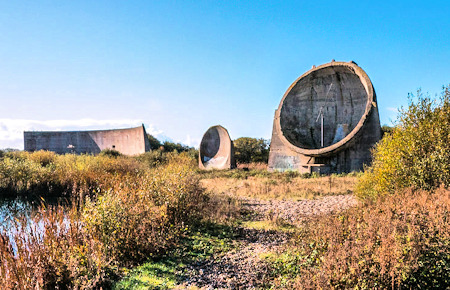
Sound Mirrors at Greatstone Lakes
Once the receivers were adjusted for best reception, the results would be compared with those from one of the other ‘ears’ and used to calculate an aircraft’s height, speed, and flight path. They worked best at a range of between eight and 24 miles
An operator using a stethoscope would be stationed near the sound mirror, and would need specialist training in identifying different sounds.
Distinguishing the complexity of sound was so difficult that the operators could only listen for around 40 minutes.
The operator at the listening post of a Sound Mirror ►

Experiments starting in WW1 took place with four types of sound detectors. They were listening wells, discs, mirrors and trumpets.
The story of acoustic early warning systems began in 1914 at the start of WW1 when attempts were made to detect the position of the enemy's artillery guns, barrages from which often preceded attacks on the trenches.
The use of microphones was a significant step forward in 1916 and when placed first in holes and then deep shafts in the ground, picked up sounds hitherto unheard.

Listening Disc on Romney Marsh, 1924 (ack.34)
These became known as listening wells but they were somewhat primitive, with men confined to the bottom of deep shafts and were replaced by horizontal discs and microphones at ground level (see picture right).
The key point about the change to discs was that the disc replaced the well and the microphone, placed at the centre of the disc, replaced the observer.
The low lying Romney Marsh was well suited to these discs with them being installed in 1924 in two long lines about three miles apart (see picture right).
Sound detectors shaped liked trumpets were also trialled and used during WW1. Following trials of various types of sound locator, a simple locator with four trumpets became universally used by the army.
But research was also taking place about the use of large concrete mirrors with an experimental one being built at Hythe in 1922, with the first one (20 feet) being built at Greatstone in 1928. By this date, the effectiveness of the disc system was being questioned leading to the abandonment of the discs in 1932.
NB You can find out more about these early days from Richard N Scarth's book Echoes from the Sky: A Story of Acoustic Defence
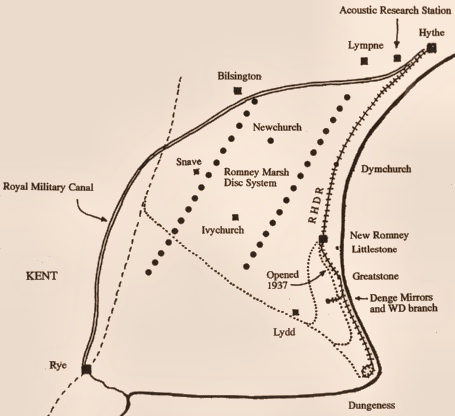
Listening Disc System on Romney Marsh, c1924 (ack.34)
The three concrete " listening ears" at Greatstone range in size from 20 to 200 feet in size. Built between 1928-30, the sound mirrors were part of Britain's national defence strategy. They were designed to pick up the sound of approaching enemy aircraft. Sound waves were caught in the belly of the mirror and relayed back through microphones and a stethoscope to an operator who raised the alarm. Anti-aircraft defences were then deployed. The mirrors effectively gave Britain a fifteen-minute warning of an impending attack.
The 20 feet(diameter) mirror was the first to be built in 1928. It was precast as one huge slab of curved concrete. Lessons were quickly learnt and a 30 feet(diameter) mirror, set at a different angle and providing greater accuracy, was built in early 1930 alongside the 20 foot mirror.
The 30ft mirror gave no advantage as to range but it was able to track an aircraft a lot more accurately than the 2oft mirro, which was only able to give estiamtions.
The third mirror is 200 feet in length and 26 feet high, and was built in 1930 alongside the other two smaller sound mirrors. Microphones were attached to the curved surfaces and in favourable conditions could pick up the sounds of aircraft up to 24 miles away.
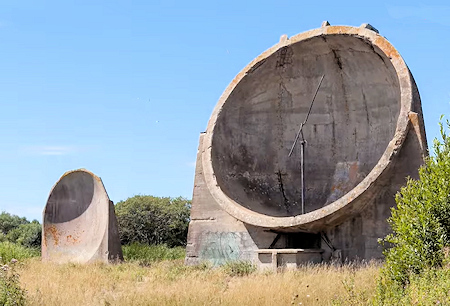
The Sound Mirrors at Greatstone Lakes
The mirrors did work, and could effectively be used to detect slow moving enemy aircraft before they came into sight. They worked by concentrating sound waves towards a central point, where the microphone would have been located. (note the microphone in the picture of the 30 foot mirror below). However, their use was limited as aircraft became faster.
Operators also found it difficult to distinguish between aircraft and seagoing vessels. In any case, they quickly became obsolete due to the invention of radar in 1935, being finally abandoned in 1939.
The sound mirrors had a limited effectiveness, and the increasing speed of aircraft in the 1930s meant that they would already be too close to deal with by the time they had been detected. The development of radar put an end to further experimentation with the technique.
Nevertheless, there were long-lasting benefits. The sound mirror programme, led by Dr William Sansome Tucker, had given Britain the methodology to use interconnected stations to pinpoint the position of an enemy in the sky. The system they developed for linking the stations and plotting aircraft movements was given to the early radar team and contributed to their success in World War II; although the British radar was less sophisticated than the German system, the British system was used more successfully.
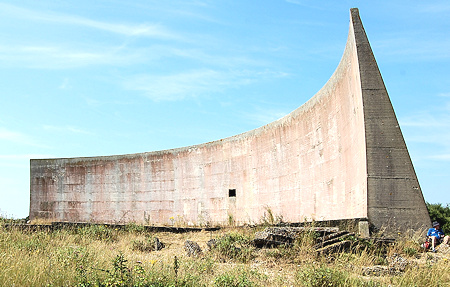
200ft Sound Mirror
For more information about the development of the Sound Mirrors in Kent, please see Sound Mirrors Timeline below and the map on the right.
A spur line to the Greatstone Mirrors was built off the RH&DR in 1928, known at the time as the War Department Branch, which was used to transport men, equipment and building materials to the mirrors site.
The sound mirrors are now a scheduled ancient monument (Number 462809). Please see National Monuments Record for more information.
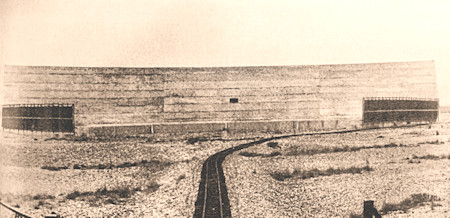
200ft Sound Mirror in 1934 showing the
War Department Branch Railway Line (Ack.34)
- 1915 - Early War Office reference to the subject of listening devices for aeroplanes by means of acoustic arrangements
- 1915 - Trials of a 16ft Sound Mirror dug into the chalk near Maidstone in Kent
- 1916 - Wooden paraboloid sound collector 60cms diameter used in First World War by the French
- 1917 - Larger mirror 3 metres in diameter tested with an aircraft
- 1917/18 - 15 ft diameter Sound Mirrors dug into the chalk at Fan Bay (east of Dover) and Joss Gap saw operational use against enemy aircraft
- 1922 - 20ft diameter concrete Sound Mirror built at West Hythe
- 1925 - 20ft Hythe Sound Mirror trials
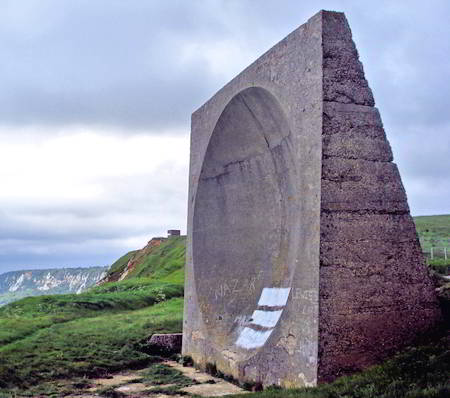
- 1927 - Proposal to erect three similar 20ft Sound Mirrors along the coast for use in 1928. In the event, only two were built, one at Greatstone and one at Abbots Cliff, between Folkestone and Dover
- 1927 - Plans under consideration for the building of 200ft wide Sound Mirror at Greatstone
- 1928 - 20ft Sound Mirrors completed at Greatstone and Abbots Cliff
- 1928 - Spur line to the Sound Mirrors was built off the RH&DR, known at the time as the War Department Branch, which was used to transport men, equipment and building materials to the mirrors site.The branch line was close in 1951
- 1929/1930 - 30ft Sound Mirrors built at Greatstone and West Hythe
- 1930 - Proposals for more 30ft Sound Mirrors, to defend Portsmouth. No records have been found of these or any other 30ft mirrors
- 1930 - 200ft Sound Mirror built and ready for use at Greatstone
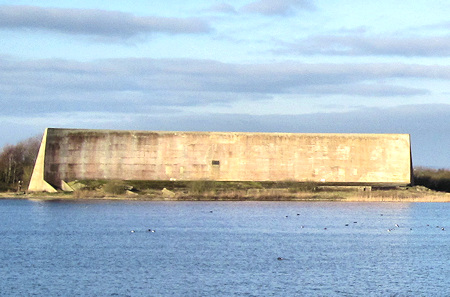
- 1932/33/34 - Exercises undertaken to test the six concrete Sound Mirrors in Kent; the three at Greatstone, two at West Hythe and one at Abbots Cliff
- 1933 - Two storey concrete listening room constructed at the 200ft Sound Mirror
- 1935 - The first practical Radar system was produced,with trials carried out at Orfordness in Suffolk
- 1935 - Because of serious problems with noise from the residential development of Greatstone and Lydd-on-Sea, consideration was given to abandoning the site at Greatstone with proposals to move to a new site at Dungeness
- 1935 - Planned work to build Sound MIrrors in the Thames Estuary were abandoned in view of the possible development of of alternative methods of detection ie Radar
- 1936 - Experiments continue at the 200ft Sound Mirror at Greatstone
- 1937 - Re-alignment of the Southern Railway branch line to New Romney caused problems at the Greatstone site
- 1937 - 200ft Sound Mirror at Greatstone closed down
- 1939 - Instructions of the General Staff to destroy the six Kent Sound Mirrors were never carried out. Five still exist, with the sixth, the 20ft Hythe mirror, was only lost through natural causes.
The mirrors are situated on an island at Greatstone Lakes in the Dungeness Nature Reserve.
Access to them is via a swing bridge, which is normally closed.
The site is managed by the RSPB, who arrange for open days, guided tours and photography sessions each year,
normally during the summer.
However, they can be seen quite clearly at any time from the footpath which runs along the east side of the south lake and from the
land side of the swing bridge.
To see the mirrors, travel to the coast end of Taylor Road,
off Coast Drive, in Greatstone (postcode TN29 9PA). Buses,
routes 11 & 102, run from New Romney town and RH&DR station,
with bus stops and car park in Coast Drive, just past Hull Road.
From the Coast Drive, walk westwards down Taylor Road
to an entrance to the Nature Reserve and
then follow the signs for The Mirrors.
By the side of this footpath, there is a concrete plinth
with information about the Sound Mirrors.
You can also walk to the Sound Mirrors from the end of Seaview Road, but there are no car parking facilities here.
See footpaths marked in red on the map on the right
view larger map
To see them really close up, however, you need to go on one of the open days or guided tours organised by the RSPB.
For more information about open days and guided walks, please contact the RSPB at Dungeness ![]() email
email ![]() 01797 320588.
01797 320588.
The RSPB run special events, where you can get closer to the Sound Mirrors, are run throughout the year. Open Days are run annually in the summer. Also, guided tours and photography days are run between August and December.
To find out about the details of special events and how to book, please visit
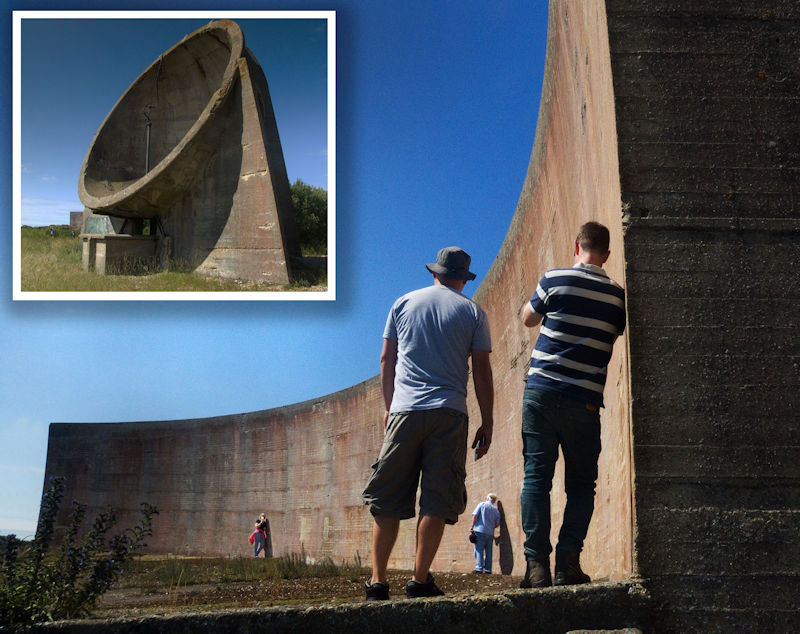
Listening at the Listening Ears - 30ft and 200ft Mirrors(Ack. 43)
Working Model
There is a working model of a Sound Mirror by the Royal Military Canal, just south of Hythe; walk south from Hythe RH&DR station down either side of the canal until you came to the footbridge, where you will see the Sound Mirror model on the west bank. Here you can, with the help of a friend, try it out for yourself. see here
From here you can also see the 30 foot mirror.
Two sound mirrors were also built on the side of a hill just west of Hythe. A 20 foot mirror was built first, then a 30 foot mirror added nearby. The 30 foot mirror is still standing and can be seen from the path alongside the Royal Military Canal. The remains of the 20 foot mirror lie nearby.
To learn more about Sound Mirrors please read:
Mirrors by the Sea: Account of the Hythe Sound Mirror System Based on Contemporary Letters and Reports


